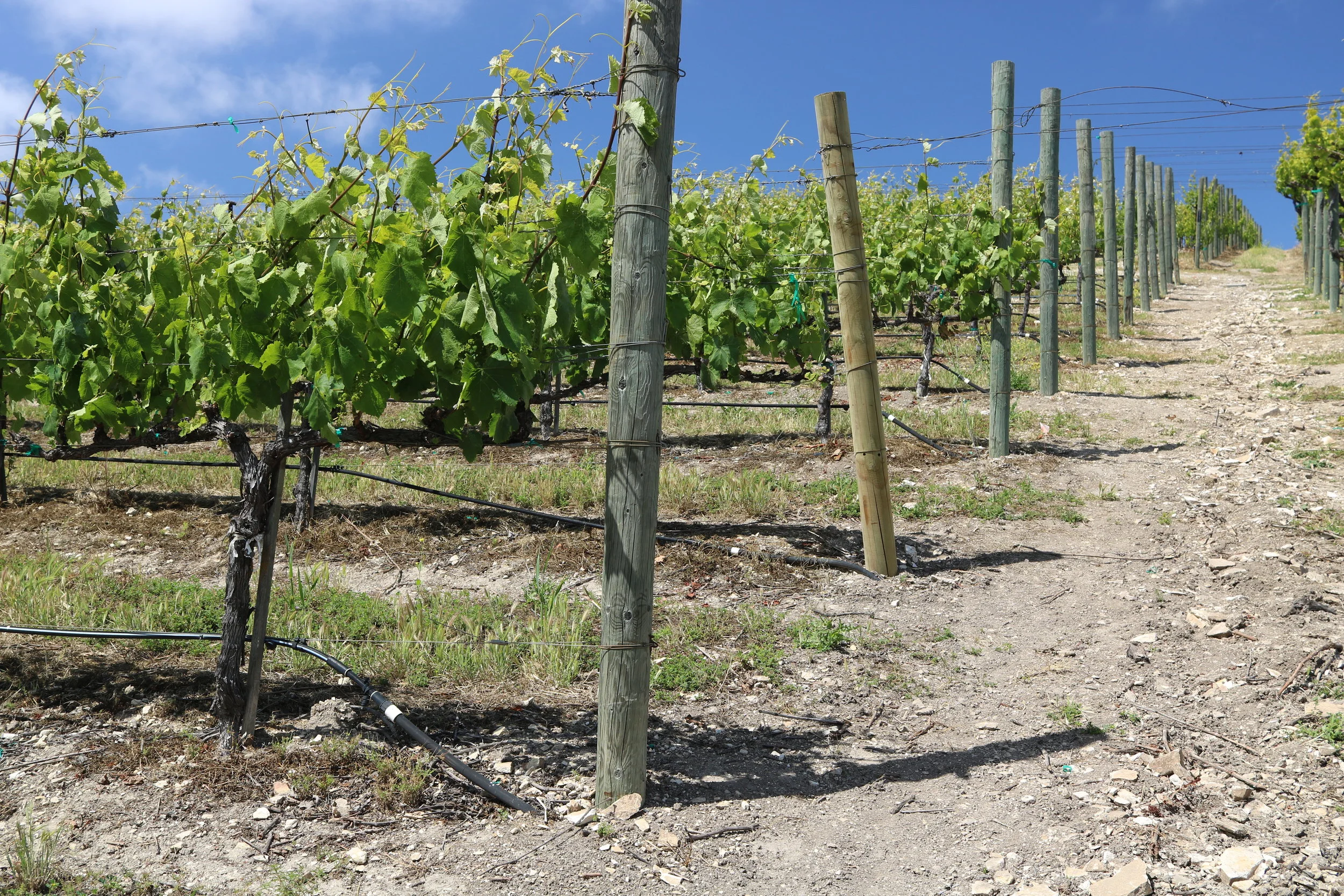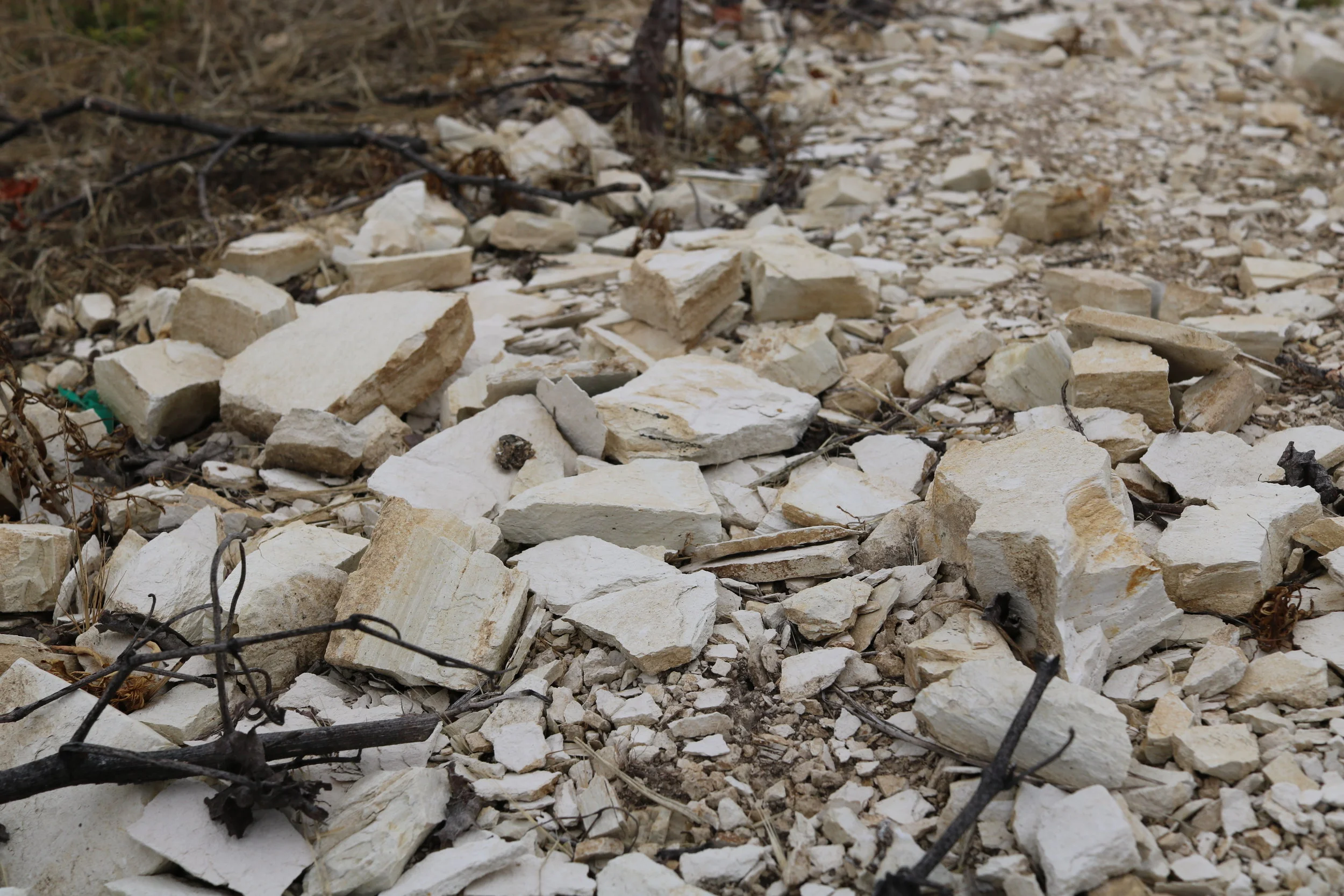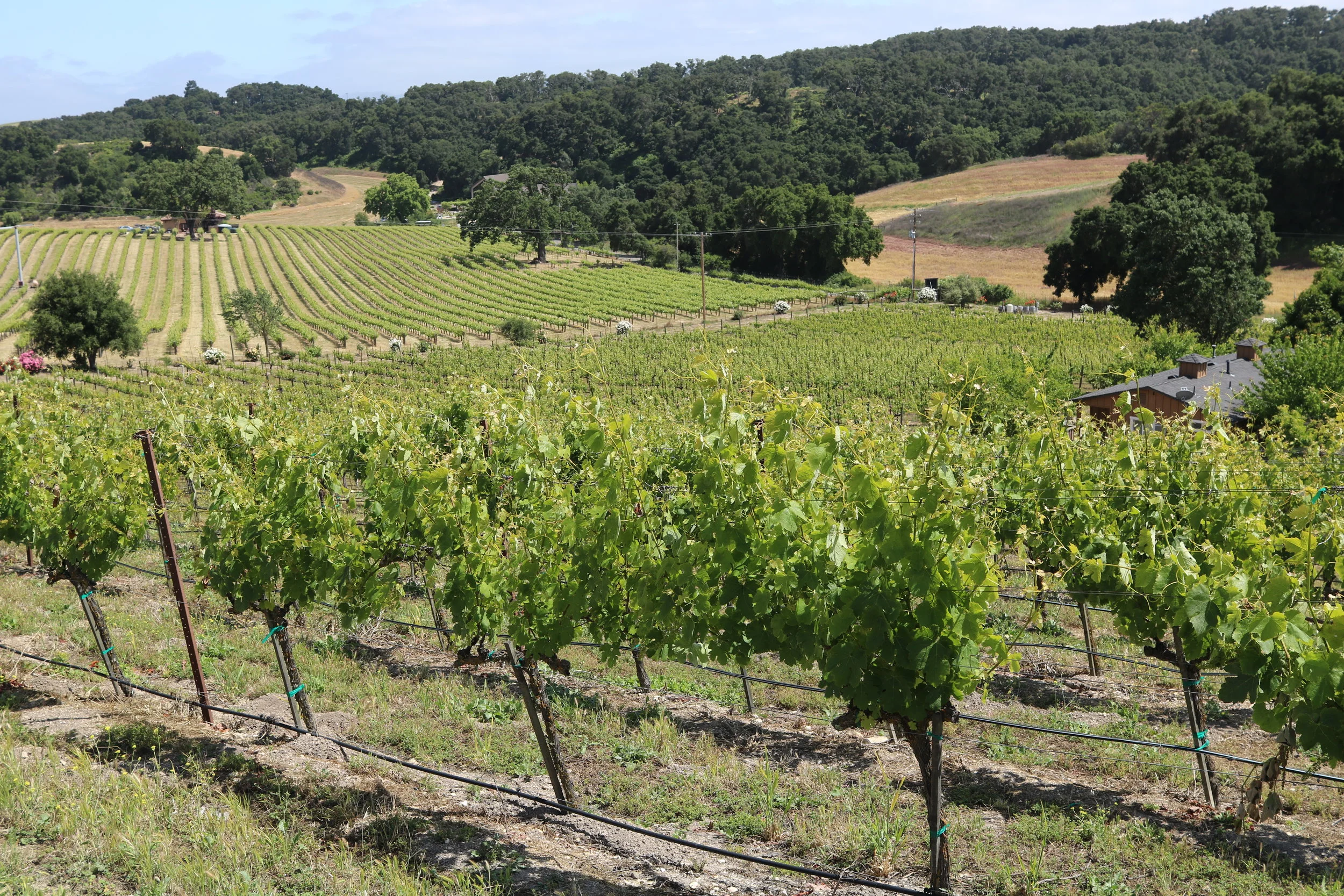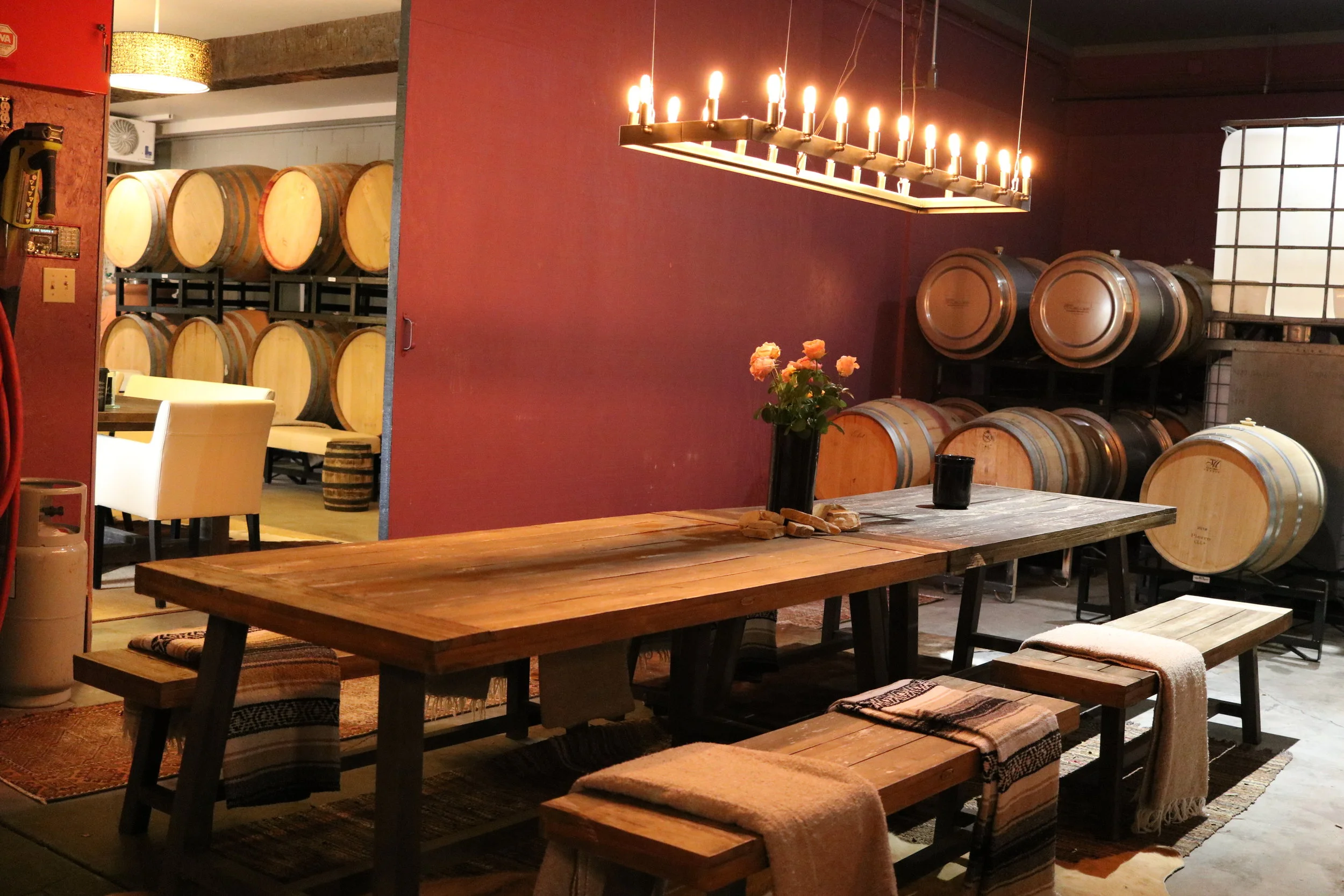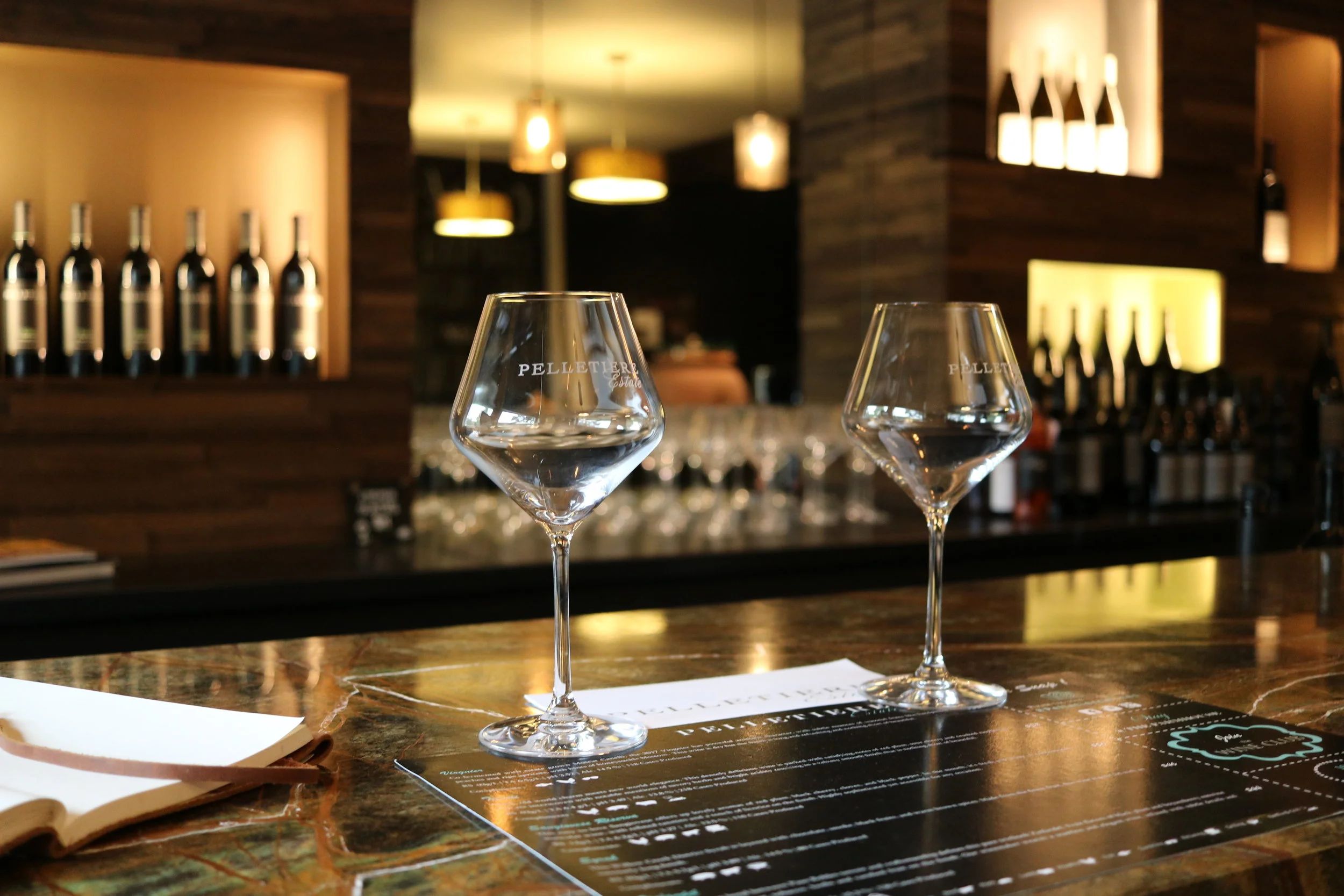View Older Post
The rolling hills of Paso Robles are truly a site to behold. Looking west over downtown Paso it becomes impossible to miss the rounded, undulating slopes that jut out softly from the otherwise quiet countryside. Although at first glance these hills seem relatively tame they increase in magnitude with each passing mile, eventually reaching thousands of feet in elevation as they creep closer towards the base of the Santa Lucia Mountain Range. While serene and picturesque these oak studded hills are not merely inconsequential elements of topography, but rather it is here that the Nacimiento fault zone has helped create one of the most interesting and unique landscapes for winegrowing in all of California.
Paso Robles is such a fascinating place to farm wine grapes largely thanks to a rare miracle of plate tectonics. Its unassuming hills are brimming with calcareous shale, or limestone as it is more broadly known, which is exceptionally hard to find in California. Stark white rocks formed during the Miocene-age have been thrust to the surface via tectonic plate subduction and are now the primary soil component in many of this area's vineyards. Paso Robles limestone is extremely chalky and highly alkaline which traditionally makes for very difficult farming, but thankfully wine grapes are one of the few crops that can survive and even thrive in these unforgiving conditions.
Tucked into the hills of the Willow Creek District of West Paso Robles is a property that is especially crowded with this precious limestone. Pelletiere Estate Winery is a small yet ambitious operation that occupies a modest 16 acre parcel of which 11 acres are planted to vines. This beautiful property centers around a single steep hill that rises dramatically up to a gentle peak which appears to be at least hundred feet higher in elevation than the property's lowest point. Loamy top soils can be found in some of the lower lying portions of the vineyard but as elevation rises the soft earth turns nearly completely to stone.
We recently had the opportunity to visit Pelletiere Estate Winery to get a glimpse into their little piece of winegrowing heaven. We arrived at the property on a brisk spring morning and embarked on an extended hike around the estate to take in the scenery. Our excursion was led by owner and proprietor Janis Denner accompanied by UC Davis trained winemaker Amy Butler, and together this team of women guided us through every important detail of the Pelletiere Estate and its picturesque vineyard. We started off near the lower portion of the vineyard to first check out the property's most adorable residents: a trio of loveable sheep. These cute critters are allowed to roam the property freely in the winter to graze and fertilize the land, but they require a bit more supervision during the growing season to ensure they don't snack on the vines or any of the valuable crop.
After meeting the sheep we jumped right into the vineyard. While we walked Janis and Amy explained the history of the property and how it was first planted by a passionate farmer in the mid-1990's. He planted the estate primarily to Italian grape varieties such as Sangiovese, Nebbiolo, and Montepulciano - an approach that is unique and somewhat rare for this typically Rhone and Bordeaux dominated area. Thankfully these Italian varieties are naturally well suited to the warm Mediterranean climate of Paso Robles and the vines grew and prospered. Janis explained that the vineyard was always meticulously farmed and maintained as a passion project, but the gentleman eventually decided to move on from the property after 20 years of stewardship and in 2014 she officially took ownership. Janis then proceeded with a complete overhaul of the winery and tasting room to beautify it to her liking. She also changed her newly acquired winery's name to Pelletiere Estate Winery, since Pelletiere happens to be her maiden name of Italian origin.
As we walked the vineyard we noted the soils in the lower blocks had plenty of broken-up limestone rock present between the vine rows, but the topsoil here was dominated by slightly sandy loam. This dense and more nutrient rich earth allowed for the vines in this portion of the vineyard to be quite vigorous, and Amy mentioned that they were considering ceasing all irrigation on some of these lower blocks increase strain on the vines. Interestingly as we trekked up the hill the story of the soil changed dramatically. Soils shifted from substantial, brown, and soft to thin, white, and dusty, and the frequency and size of rocks seemed to increase with passing each step. In the higher blocks erosion had swept the topsoil nearly completely away and revealed concentrations of limestone bedrock, often with many extremely large pieces present and protruding into the vine rows.
After finishing our hike and heading back to the tasting room we learned exactly how these meager rocky soils had enacted their will upon the wines of Pelletiere Estate. Janis poured us through the current Pelletiere lineup and one thing that was immediately apparent to us was the amazing depth of color in each and every wine. Despite harvesting the fruit at moderate levels of ripeness and largely avoiding additional extraction techniques such as pre-fermentation cold soaks or post-fermentation extended maceration the wines of Pelletiere were almost all a dark nearly opaque ruby/purple color. These wines' flavors were decidedly concentrated yet each retained a sense of desirable weightless elegance that can be quite rare in Paso. Amy explained that as winemaker she was not seeking to make dense and extracted wines, but the color and concentration were merely a byproduct of the estate's terrific terroir.
As we tasted we were blown away by how well-suited these Italian grapes were to this special property and we found each wine we sampled to be absolutely delicious. While everything was quite wonderful the Nebbiolo, Sangiovese, and Lagrein stuck out to us as perhaps the three most interesting wines in the portfolio. The Nebbiolo was intensely perfumed with classic tar and rose character and pronounced yet approachable structure; the Sangiovese expressed delicious savory characteristics along with gorgeous California fruit; the Lagrein was a marvel of weightless structure and density with surprising energy. Each had a distinct underpinning of zingy limestone earthiness that we've come to associate with fruit grown on the west side of Paso. The wines of Pelletiere Estate may possess plenty of powerful Paso Robles character but they are decidedly feminine in style - a strong feminine style indicative of the two tenacious women responsible for their creation.
We discovered that Pelletiere Estate Winery is an outlier in Paso Robles in some of the best possible ways. It is the home of uncommon yet optimally-suited Italian grape varieties that are made into powerful yet balanced styles of wine. Its miniscule production of about 1300 cases is ideal to allow for extreme care and attention to go into each bottle, and the cozy 16 acre property is flawlessly manicured. For those looking for a unique, intimate, and unquestionably delicious winery experience in Paso Robles Pelletiere Estate Winery ranks among the best spots we've encountered. We're glad to have stumbled upon Pelletiere's remarkable wines and look forward to continuing to visit its gorgeous property on our future Paso Robles excursions. We cannot thank Janis and Amy enough for their hospitality and generosity in hosting us.


